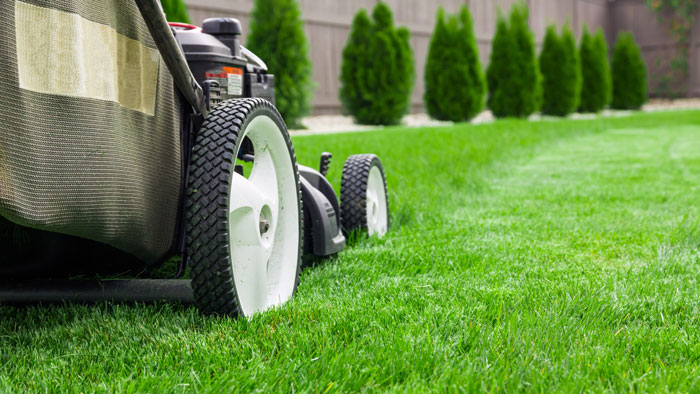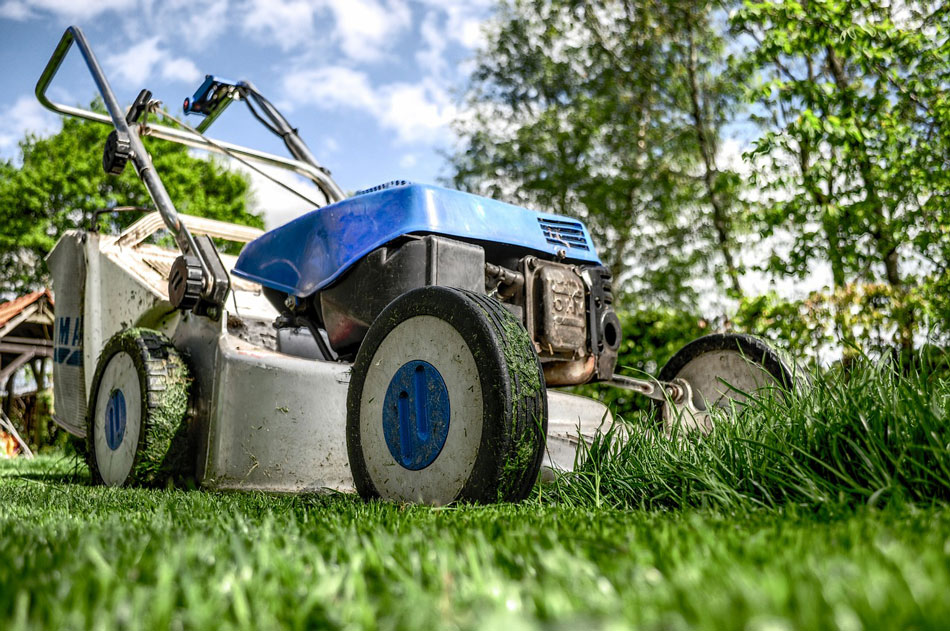Lawn Mowing - Everything You Need to Know

Maintaining a beautiful lawn takes quite a bit of work, but a great way to start is mowing your yard properly. A lot of homeowners feel that they need to pull out their mower when their yard looks overgrown, but a healthy, lush lawn needs regular mowing.
If you're tired of maintaining your yard, LawnStarter can handle all of your lawn mowing and lawn care needs.
Lawn Mowing Questions and Answers
How often should I mow?
Many people’s strategy towards lawn care consists of dragging the lawn mower out or scheduling lawn mowing whenever their grass begins to look bad, but there is more to the process. How and when you mow your grass plays a big part in the overall quality and presentation of your lawn.
Regularly watering, fertilizing, and cutting of a lawn is essential to a healthy life cycle for your grass and vegetation. The more diligent a person is about mowing their yard, the healthier and greener it will become. Many people who can't spend very much time tending to their yard elect to hire a lawn service so that their lawn gets the proper maintenance it requires.
The standard rate at which you should mow your lawn is generally once per week, or possibly once every two weeks depending on the season and water restrictions in your area. During wintertime, you may cease mowing or mow monthly, depending on weather. If you are unable to mow your grass one week or forget for some reason, then it’s important to still adhere to the 1/3 principle when mowing your grass. Even if you have to gradually cut the grass 1/3 at a time until it reaches the right height, it’s still recommended to maintain that standard. Most lawn mowers have an adjustment to ensure that the mower blades are at the correct height to achieve this objective.
How short should I cut my grass?
It’s important to remember the 1/3 principle when it comes to lawn care. You should never cut your grass more than 1/3 of its original height at any time. This could cause trauma to the grass and result in discoloration. The perfect height for the grass in your yard depends on the type of grass and the season. Different types of grass thrive at different heights, and all grass should be kept longer in the summer to help cut down on water usage. Higher blades of grass helps prevent water from evaporating as quickly, allowing you to save some money and still have a gorgeous yard.
What if my grass is too tall already?
If you've been out of town or just got a little backed up with other chores, don't worry. You'll still want to adhere to the 1/3's rule, but make sure that you cut your grass down in increments. This will reduce the amount of stress you put on the grass.
How often should I perform maintenance on my lawn mower?
Lawn mower maintenance can range from cleaning the undercarriage to a professional inspection.
Before Each Mow
Before each mow, make sure that gas and oil levels are at the correct levels. Much like a car, your lawn mower's oil needs to be changed. Most mowers need their oil changed after 20 hours of operation, but check your mower's owner's manual to see what the manufacturer suggests.
The Blades
Sharp blades are crucial for your lawns health. Dull blades can ruin your lawn by tearing at the blades of grass rather than cutting them clean. If you don't have the proper tools to sharpen blades, it is recommended that you can take it to your nearest mower repair shop.
Winter/Seasonal Mower Storage
If you're planning on storing your mower for a period of time, make sure that you drain the gas from the tank to ensure that no bad gas sits in the mower. Your mower's spark plugs should aslo be replaced yearly, and a great time to do that is before each season. Follow these steps and you'll have a stress-free start to the next mowing season.
What type of lawn mower should I use?
There are several different types of mowers that you can use. Purchasing the correct mower for your needs really comes down to the size of your yard, your budget, and your personal preference. Riding mowers are recommended for larger yards, while push mowers can handle small to medium jobs.
Should I bag my clippings?
Bagging your grass clippings isn't always recommended, as the clippings are beneficial to your lawn's health. The cut blades of grass act as a natural fertilizer, maintain moisture, and shade your soil from the hot summer sun. If you mow frequently enough, you won't have to worry about the volume of grass clippings.
What else should I do other than mow to keep my lawn healthy?
There are several other things that can help maximize the longevity and health of your lawn, including fertilization, core aeration, and overseeding. You can read more tips in our lawn care guide.
Doing it yourself? How to choose the right lawn mower for you

There isn’t a one-size-fits-all lawn mower for every homeowner. Many factors including lot size, topography, physical fitness, cost and personal preference are major factors that must be weighed before making a decision.
Lot Size — A homeowner of a large property with multiple acres requires a different type of lawn mower than a person with a small yard. For this person, a riding lawn mower would be the weapon of choice. Riding lawn mowers range in price from $600 to $14,000, depending on the power, size, and quality of the machine that a person’s needs. A large property will also restrict homeowners from using electric lawn mowers that require the machine to remain plugged into an outlet.
The standard rule of thumb for choosing a lawn mower based on yard size is that for yards no larger than 1/2 an acre, it is recommended that the homeowner use a push mower. While using a riding lawn mower isn’t out of the question, it would be too cumbersome and much less effective on a yard that size. For lawns larger than 1/2 an acre, the homeowner should begin to consider a riding mower, which will save time and energy for the user. People with properties greater than three acres should then look at upgrading to a zero-turn or garden mower, which will provide better mobility and ease each time the grass needs mowing.
Topography — You must determine if your yard is flat or if there are variations in elevation, including varying hills and valleys. A riding lawn mower, for example, wouldn’t be a great fit for a yard with steep hills and tight spaces due to the lack of mobility that they provide compared to push mowers.
Physical Fitness — Lawn care is a physical activity that requires a certain level of strength and stamina. This can be offset to an extent with a riding lawn mower, but the individual would then incur a greater cost. Motorized lawn mowers are generally a perfect balance between the price (compared to that of riding lawn mowers) and the physical effort needed to propel a non-electric reel lawn mower that uses only the physical exertion of its user to cut the grass.
Cost — Lawn mowers can be a very expensive purchase for an individual, so cost is a very important factor to be weighed before purchasing a tool. Standard reel, or cylinder mowers, are generally the cheapest and can be found for roughly $70 to $90. Electric and gas push mowers can range from $100 to $400 and riding mowers can be as much as $14,000.
Personal Preference — Personal preferences depending on the individual can consist of choosing an electric vs a gas push mower or choosing to go completely low-tech with a standard reel mower. Mowers can also be personalized with features that include a mulching blade that chops up the grass into tiny bits and distributes it across the yard, or a grass bag that collects the clippings as you go to make for an easier disposal.
Next Chapter: Core Aeration